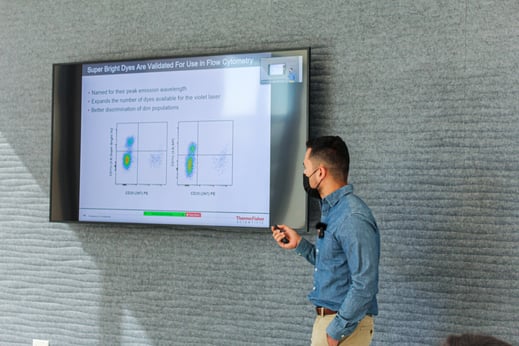A curriculum vitae or a CV is a collection of all your work experiences and skills. The CV should include extensive information about your academic background, including experience, degrees, research, awards, publications, presentations, and other achievements. The purpose of the CV is to provide a concise summary that condenses all your information to convey your qualifications. Sometimes organizations and job positions may ask for a CV summary.
The summary is a one to two-page condensed version of the CV and still offers an overview of your skills and qualifications, but in a quicker way. The CV summary might be less detailed and prioritize certain aspects. Despite which version of the CV is requested, your CV is important for the hiring committee because it is an overview of who you are in your professional expertise. The CV is your first form of contact with a prospective employer. It acts as a screening tool and first impression, so individuals can see how you might fit into a role.
This description of a CV sounds highly similar to a resume. A resume and CV are identical and will contain much of the same information. The main differences between a resume and a CV are the length, what is included, and what each is used for. The resume is concise, usually one page at maximum. It is used for any job and showcases or markets the individual for almost any job by highlighting their work, history, and accomplishments.
In comparison, the CV presents a history of academic and professional credentials. The CV will, therefore, run longer than the resume. Since the CV is longer, you should include more information and details. Particularly add extensive information by being more in-depth about your credentials, certifications, research, and affiliations. The CV should highlight these points in detail because they are used for academic purposes and scientific and medical positions.
🔬Learn: How to Write a Resume
When making your CV it is important to know what you have already done and how it fits into your CV. Start by making a list of all your background information, and then organize it into categories. Your curriculum vitae should include your name, contact information, education, skills, and experience.
In addition to the basics, a CV includes research and teaching experience, publications, grants and fellowships, professional associations and licenses, awards, and other information relevant to the position you are applying for. The overview below provides all the sections that should be in your CV.

Contact Information
At the top of your CV, include your name and contact information. The contact information includes your address, phone number, email address, and LinkedIn (if you do not have one I encourage you to make one). During the application process, some jobs may even ask you to provide one to three references that the employers can contact.
If the application requests references, please provide this information at the end of your CV. In the reference section, give the references' names, list their title/position, relationship, and best contact information for reaching them. If there is no request for a reference in the application then there is no need to include this information.
Education
The next part of your CV should cover your education. The education section usually refers to your college and graduate studies. Choose a format to present your schools. This format includes the school attended, dates of study, and degree/degrees received.
Honors and Awards
Under education, showing your appointments or accomplishments is an admirable section. It shows that whatever you did, you did well, so you stood out and received honors and awards. Honors and awards include appointment positions, dean's list standings, departmental awards, scholarships, fellowships, or memberships with specific honors associations.
Project Experience
The next item on your list will be any project experience. These projects may be self-motivated and self-supported or sponsored by a school. Regardless of the form of sponsorship, note who is sponsoring and directing the project and your role in bringing the project to life.
Research Experience
After your project experience, it is time to discuss your research experience. List any research experience, including your formal title. For example, specify whether you were an undergraduate researcher, lab technician, or graduate student researcher. Add where you worked, when, and who oversaw your research work. Additionally, be prepared to add your thesis or dissertation titles for your work. If wanted, include a brief description, about a sentence or two, that details your work. If you have any publications from this research, please also attach and note these in the same section.
Work Experience
In the next section, this portion will be any relevant work experience. Note that the work you do include should be relevant to the position you are applying for in some way, shape, or form. These positions might be non-academic work that you feel is unrelated, but, recall what we have shared before. In a previous blog, a few individuals shared, “Every experience translates.” If it seems like it geared you for your next position, then it is relevant. When listing these positions, present the employer, position, and dates of employment. Under this information, choose three brief bulleted sentences and list your duties and/or accomplishments while in this position.
Volunteer Experience
The last portion that has influenced your experiences is your volunteer experience. The volunteer experience is a chance to highlight soft skills you have learned and applied along with your interests. When adding your volunteer experience, include the organization, position, and description of your role as a volunteer. In this section, you can also add any group leadership involvement.

Skills
The next section is noting the relevant skills that you have. These skills should pertain to the job specifics. Consider that these should be specifics you have not yet mentioned or are not immediately transparent when explaining your previous work. Present these skills in three categories; language skills, technical skills, and soft skills. From these categories, pick the ones that are both relevant and interesting. A good rule of thumb, choose the top three that come to mind for each category.
Publications and Presentations
List any publications you have written, co-written, or contributed to. Include all necessary bibliographic information. You should also include any pieces you are currently working on. Include papers you presented at conferences and/or associations. If you are inserting a publication, list the name of the paper along with other coauthors and when it was published. If it is a presentation, insert the conference name, the location, and the date.
Professional Memberships
As you continue to adopt a professional lifestyle you might be inducted into professional associations. If you are involved as a member or even work your way up to be a board member of the association, list these memberships, if you choose. When listing your professional membership the correct approach is to add your membership along with your title and a description of your role with the association.
Extracurricular Activities
The last part of your CV should feature organizations that you find interesting. Those reviewing your CV will appreciate knowing you have hobbies outside of work. If this is your case, include clubs or organizations you associate with. These associations can be a service or anything related to your interests outside of the work environment. Another benefit of adding this section is that it could be a hobby that sparks the starting point for a great discussion.
As you write these points in your CV, one hiring manager shares his urge to “Think through the lens of the hiring manager.” He explained that a hiring manager needs to look through hundreds of applicants. By remembering the job description your CV can show the hiring manager how you are qualified for the job, what you have to offer the organization, and why you are a terrific candidate to interview and work in the position. This aspect is most important when writing a resume, and applies to the CV. To ensure you are aligning yourself with the position and the company, make sure that you highlight your education, work experience, and skills as they relate to the particular industry or job.
For instance, if you are applying for a research and development engineering position, consider putting your R&D and design experience at the top of your CV. Write about this previous position and add keywords from the job description in your CV. This extra step will show the employer you are an ideal fit for the position. Continue evolving your CV to fit the employer's needs and match your qualifications to the job. These little details will make your CV stand out to future employers and be successful.

🔬Learn About: How to Sell Yourself in an Interview
When creating your CV, you can make a truly successful one by paying attention to the small details. These details include items such as; format, proofreading and editing, and clarity. Paying attention to your format makes it professional and easy to read. Proofreading and editing with multiple people can also ensure you turn in a CV that is well-developed and well-perceived by others that are not you. Proofreading and editing also can lead to better clarity. Reexamining what you write and having others check for this part as well can guarantee that others understand your past experiences. Below is a description of the correct way to approach these parts to be certain you have a polished CV.
Format
Regarding the format, know what to include and how to format this information. Choose an appropriate format. Make sure you choose a curriculum vitae format that is appropriate for the position you are applying for. For formatting consider aspects of the CV like length, font choice, font size, and uniform sections. No matter how you decide to organize the sections of your CV, be sure to keep each section uniform. For example, if you put the name of one organization in italics, every organization name must be in italics. If you include a sentence or two about your accomplishments in a particular position, like a fellowship, make a bulleted list of each accomplishment. This addition will keep your CV organized and easy to read. When writing this information there’s no need to use crazy art fonts that are difficult to read. Instead stick to acceptable fonts such as Times New Roman, Arial, or Calibri. Your font size also matters and should be between 10 and 12 point font. It is best to enlarge your name and headings. You can make them bolded and in color, so they stand out.
Proofreading and Editing
Before submitting a CV, proofread and edit it multiple times. Getting the most out of your CV reviews means making a few copies and sharing them with some of your friends and recruiters. Ask for feedback and use this feedback to reconstruct your CV. There should be no spelling or grammatical errors. Your descriptions should not be repetitive. You should have multiple CVs for various positions and each one should showcase, highlight, and demonstrate your effectiveness for the job.
Clarity
A clear CV is understandable for those reading it. One recruiter shared, “A recruiter or hiring manager does not want to hire someone who they cannot understand.” Your CV becomes the first impression of how you write and speak. If your CV is confusing, you probably are not saying what you want comprehensively. If others can describe your positions accurately using your CV, this test is a good measure of a clear CV.
Finally, ensure the CV is the right choice to represent you. Review sample CVs and reflect on structure and organization. When you are ready, write a custom CV for every job and position you are applying for. If you are taking your CV to an in-person interview, print it on nice professional paper to stand out. Your next position might depend on how well you create your CV. Best of luck creating.
🔬Learn About: Interview Preparation
Download The Ultimate Guide to Wet Lab Incubators in Southern California, a handbook to assist life science start-ups through the entire decision-making process to find wet lab space.
Download Now